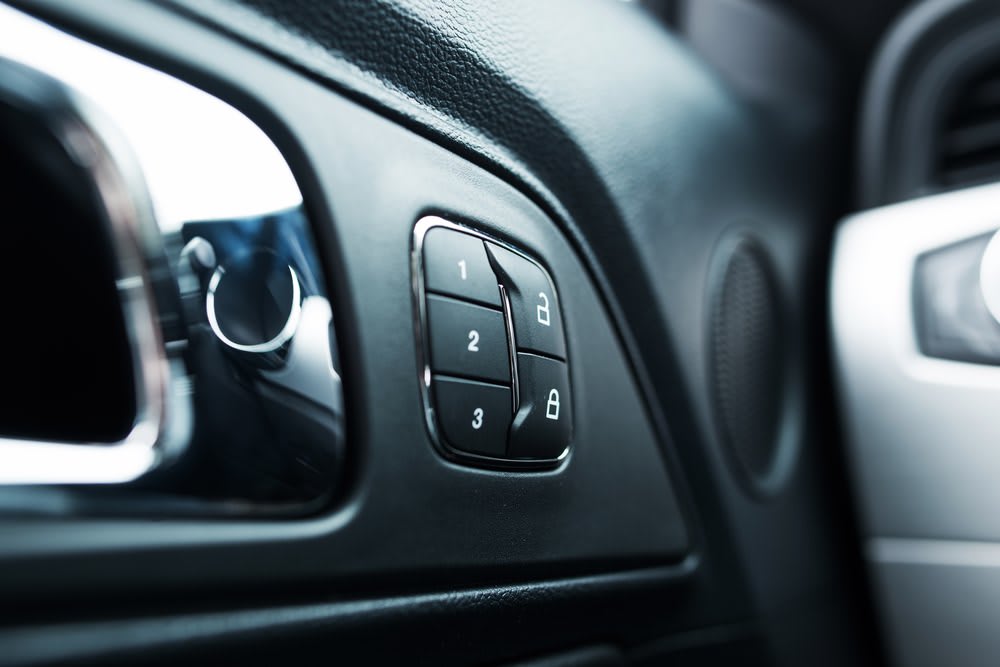

Pioneered by Ford, keypads let you lock, unlock without keys
Pioneered by Ford, keypad door systems began appearing on high-end car and SUV products in the early 1980s. Ford took advantage of the then-new digital computer revolution – the automaker was one of the first to adopt digital technology for car/engine control – to add the keypad feature. Keypads may be located on the bottom of the driver’s side window from or along the driver’s side pillar. Keypads illuminate when you touch them so that you can enter codes.
How keypads work
Keypads work by generating digital code sequences. The codes are sent to the security control module, the computer that controls things like locking the doors, locking the trunk, setting and arming the alarm system and such.
The security control module accepts the code sequences, decodes them and generates the proper voltages for the door lock actuators. In turn, the voltages activate door locking and unlocking. The keypad also produces codes that will:
- Activate memory seat features
- Unlock the trunk
- Activate the liftgate on an SUV
- Lock all doors
- Unlock all doors
Every car’s code is unique
Every car manufactured has a unique, factory-programmed code. It is stored in permanent memory so it cannot be erased or overwritten. If, however, you want to program a unique code, the keypad also allows you to set aside the factory-programmed sequence and enter your own. Once you enter the new code – the procedure is spelled out in the owner’s manual as well as online – you’re all set. If there comes a time when you need to get into your car’s lock and the customized code isn’t available, you can still use the original code. Just follow the manufacturer’s recommendations to use it.
Common keypad problems
Because of their location on the window frame or on a panel on one of your car’s body surfaces, keypads can suffer from a number of issues including:
- Dirt contamination
- Dust
- Leakage
- Short circuits
- Open circuits
- Sticking pushbuttons
Suffice it to say, each of the problems can cause the keypad to fail. Dirt and dust can disrupt pusbutton closure over time. At first, keypads work well because they of their complete sealing against the weather and contaminants. Over time, though, as keypad protection breaks down, dirt and dust can get into individual keys, preventing their closure. By the same token, water leaks in, around any protective shielding. Shorts and opens, while they have the same result in preventing keypad function, are different electrical failures. Short circuits can result from chafed wires touching screws or body metal while opens are non-working parts of a circuit. A circuit can go open if a part such as a diode fails. Sticking pushbuttons can fail because they stick. They are usually the result of wear.
Repairing a keypad and costs
If keypads are made correctly and properly shielded, they should last for at least 100,000 miles. If you have to replace a keypad, ask your mechanic to find you the best possible replacement for your available budget. Repairing the keypad usually involves replacing the keypad as a unit, not individual keys. It may also involve replacing a wiring loom and connectors. It could also involve swapping out various relays, solenoids and, possibly, the control module itself.



